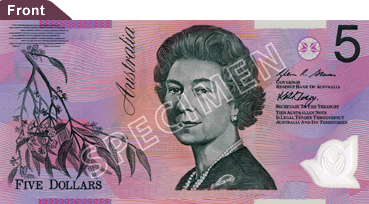The Australian Dollar
This was news to me! Is the Australian dollar still considered a fiat currency even if it’s backed by the commodities?
And I wonder why Canadian dollar isn’t like this — we’ve got plenty of commodities.
The Australian dollar is a commodity-based currency and is currently the sixth most traded currency in the world currency market (behind the US dollar, the euro, the yen, the British pound and the Swiss franc).
It accounts for approximately 5% of the total volume of foreign exchange transactions (approximately 1.9 trillion dollars a day). Its popularity is due to the fact that there is little government intervention in the currency and a general view that Australia has a stable economy and government.
For much of its history, the Australian dollar was pegged to the British pound however, that changed in 1946, when it was pegged to the US dollar under the Bretton Woods system. When this system broke down in 1971, the AUD moved from a fixed peg to a moving peg to the US dollar. Then in September 1974, it moved to a moving peg against a basket of currencies called the TWI (trade weighted index) because of concerns about the fluctuations in the US dollar. This continued until December 1983, when the then Labour government under Prime Minister Bob Hawke and Treasurer Paul Keating “floated” the Australian dollar.
The Australian dollar is now governed by its economy’s terms of trade. Should Australia’s commodity exports (minerals and farms) increase then the dollar increases. Should mineral prices falls or when domestic spending is greater than exports, then the dollar falls. The resulting volatility makes the Australian dollar an attractive vehicle for currency speculators and is the reason why it is one of the most traded currencies in the world despite the fact that Australia only comprises 2% of the global economic activity.
Over the last 23 years as a free floating currency, the Australian dollar has usually served as a proxy for gold due to the fact that Australia is the second largest producer of gold after South Africa. Fluctuations in the price of gold have seen corresponding rise and falls in the Australian dollar.

